
kkkkk
DMT (dimethyltryptamine) is one of the strongest psychedelic substances on Earth. Just a few milligrams is strong enough to blast your entire consciousness into another dimension — sometimes referred to as DMT hyperspace.
DMT is surprisingly common in nature. It’s found in various plants, animals, and even a few species of sea sponges. This psychedelic is even produced in the human brain (albeit in very low concentrations).
Here, we’ll explore plants that produce notable concentrations of N,N,DMT, and 5-MeO-DMT.
How Common is DMT in Plants?
Thousands of plant species produce DMT — even citrus fruit rinds contain some . However, only a few plants contain DMT in doses high enough to be psychoactive.
The reason we don’t blast off every time we eat a lemon because our body is good at breaking DMT down before it takes effect. DMT only becomes psychoactive when we smoke, snort, or mix it with other plants that prevent the body from breaking it down (mainly the harmala alkaloids or other MAO inhibitors).
Most plants produce a combination of N,N,DMT, 5-MeO-DMT, and 5-HO-DMT (bufotenin). The ratio of these primary sources of DMT will vary depending on the species, as well as environmental conditions and the time of year the plant was harvested.
1. Acacia spp.
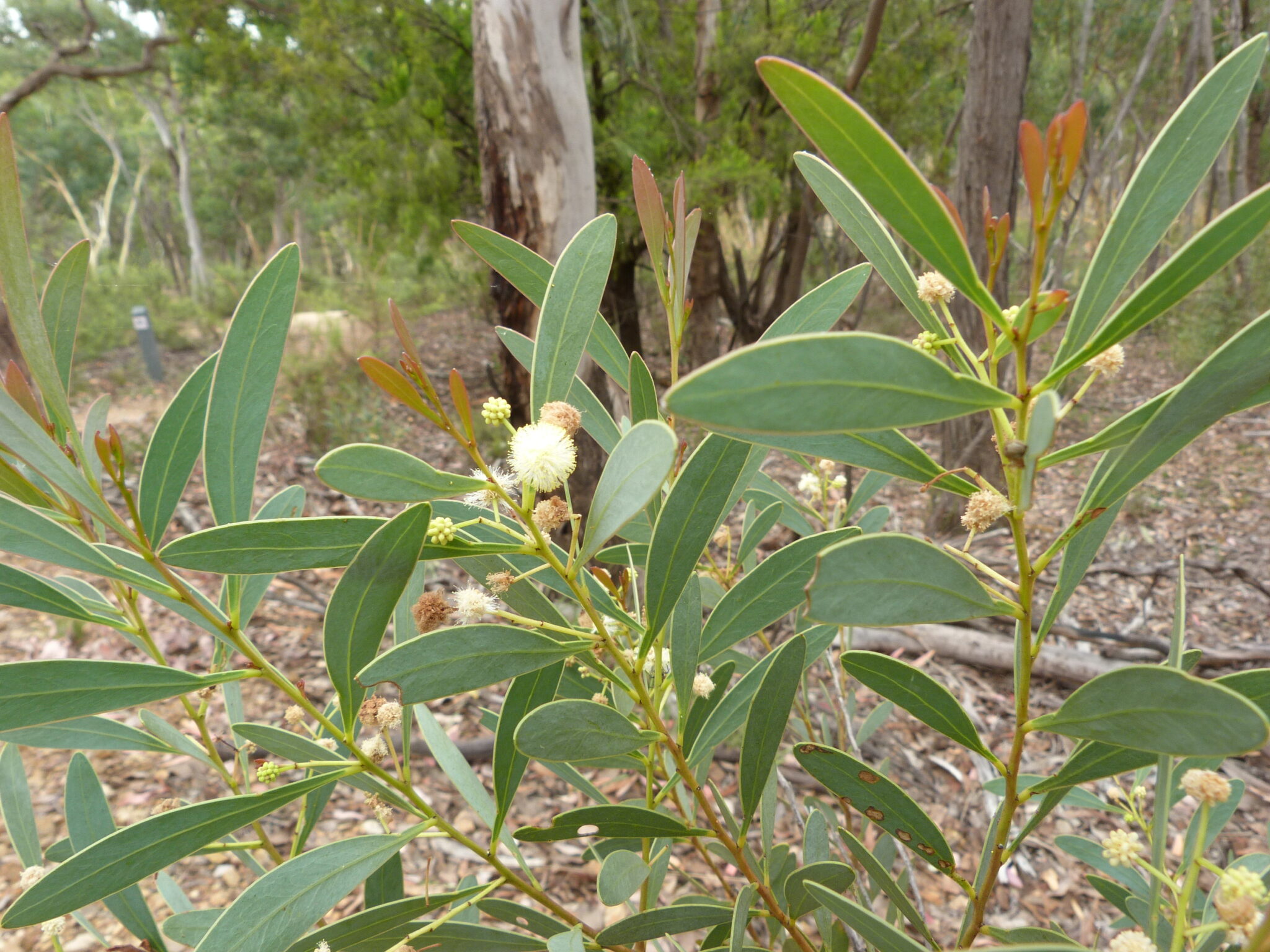
jjjj
The acacia genus contains around 160 different species — most of which are found in Australia and Africa. They’re members of the pea family (Fabaceae), which makes them close relatives of other DMT-containing genera including mimosa and desmanthus.
Acacia trees are a rich plant source of DMT. Dozens of species have been confirmed to contain a combination of N,N,DMT, 5-MeO-DMT, bufotenin, and related tryptamine alkaloids.
Some species, such as Acacia berlandieri contain other psychoactive alkaloids too, including mescaline, amphetamines, and nicotine.
The bark and leaves contain the most DMT, which is used to prepare formulations such as changa or ayahuasca. Acacia species are also an excellent source for extracting DMT.
Mexican acacia (Acacia angustifolia) was used by the Aztecs in the form of a tincture for mild psychoactive effects.
West African acacia (Acacia campylacantha) was fermented in beer to provide mild to moderate psychoactive effects as well.
In parts of Southeast Asia, the resin of the catechu tree (Acacia catechu) is one of the primary ingredients in betel quid — a psychoactive mixture made up of several species of psychoactive plants.
Acacia trees that have been confirmed to contain DMT include:
- Acacia acuminata
- Acacia alpina
- Acacia angustifolia
- Acacia angustissima
- Acacia auriculiformis
- Acacia baileyana
- Acacia berlandieri
- Acacia catechu
- Acacia caven
- Acacia cole
- Acacia complanata
- Acacia confusa
- Acacia confusa
- Acacia constricta
- Acacia cornigera
- Acacia cultriformis
- Acacia drepanolobium
- Acacia farnesiana
- Acacia filiciana
- Acacia floribunda
- Acacia georginae — contains toxic compounds too avoid this species
- Acacia greggii
- Acacia harpophylla
- Acacia implexa
- Acacia karroo
- Acacia kempeana
- Acacia kettlewelliae
- Acacia laeta
- Acacia longifolia
- Acacia macradenia
- Acacia maidenii
- Acacia mangium
- Acacia melanoxylon
- Acacia mellifera
- Acacia nilotica
- Acacia phlebophylla
- Acacia podalyriaefolia
- Acacia polyacantha
- Acacia retinodes
- Acacia rigidula
- Acacia roemeriana
- Acacia salicina
- Acacia schottii
- Acacia senegal
- Acacia sieberiana
- Acacia simplex
- Acacia tortilis
- Acacia vestita
2. Yopo (Anadenanthera spp.)
Yopo (also called Yopo, Jopo, or Cohoba) is a tropical tree species found throughout the Amazon and parts of the Caribbean.
The beans of the yopo tree contain relatively high concentrations of bufotenin (7.4%) and related tryptamine alkaloids, including 5-MeO-DMT (0.04%) and N,N,DMT (0.16%) [3].
This tree has a long history of use as a psychedelic. The most common form of administration is to powder the beans and insufflate them through the nose. Most commonly, someone will blow the snuff through a hollowed out piece of bamboo directly into another person’s nose. This allows more yopo to enter the nasal cavity than snorting the powder alone.
The process is painful but produces powerful psychedelic effects. The experience is short-lived, lasting just a few minutes. Some tribes will combine the Banisteriopsis caapi (ayahuasca) vine into the mix as well to prolong the effects.
Related DMT-containing species include Anadenanthera macrocarpa and Anadenanthera peregrina.
3. Giant River Reed (Arundo donax)
Arundo donax is a species of cane found throughout the Middle East, California, the Caribbean, and the islands of the West Pacific.
Depending on the region, this plant goes by many common names; just a few examples include giant cane, elephant grass, carrizo, arundo, Spanish cane, Colorado river reed, and wild cane.
As the name implies, this reed is very large — stretching itself up to 10 meters high in optimal conditions. Its fast growth and tolerability to hot climates makes it an attractive option for carbon sequestration and improving degraded soils. It also contains high concentrations of isoprene — which is the precursor for terpenes and synthetic rubbers, and plastics.
The whole plant contains a pharmacy of tryptamines, including N,N,DMT (0.0057%), 5-MeO-MMT (0.0023%), 5-MeO-NMT, and bufotenine (0.026%).
4. Bundleflower (Desmanthus illinoensis)
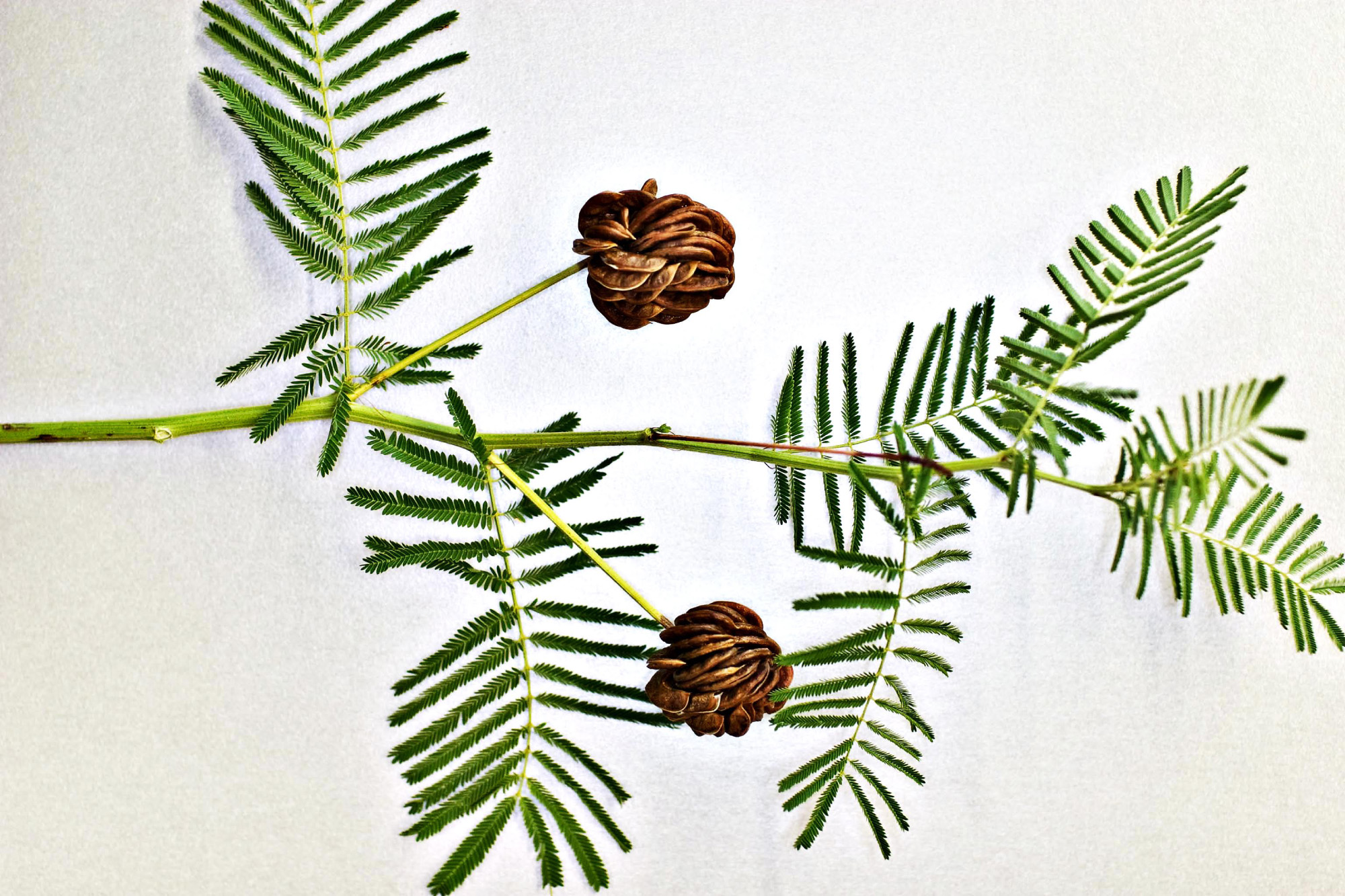
jjjjjjj
Many members of the desmanthus genus contain DMT and related tryptamine alkaloids. The bundleflower (Desmanthus illinoensis) contains the highest concentration of N,N,DMT at around 0.34% in the root bark.
This species can be found throughout the Eastern United States and is particularly common in Florida, Texas, North Dakota, and Pennsylvania. Other members of the desmanthus genus can be found in Mexico, Central and South America, and Australia.
This genus is a member of the Fabaceae family of plants — which includes other DMT-containing species, including acacia and mimosa.
5. Chagro-Panga (Diplopterys cabrerana)
Diplopterys cabrerana is an Amazonian vine sometimes used as an alternative to chacruna for making ayahuasca. It contains high concentrations of N,N,DMT (1.3%), and trace amounts of 5-MeO-DMT and other tryptamine alkaloids, including bufotenin and methyltryptamine.
The leaves of the plant also contain trace amounts of beta-carboline — which is a common MAO inhibitor used to activate the DMT in plants. There isn’t enough beta-carboline for this plant to be psychoactive on its own without a stronger MAO inhibitor such as the ayahuasca vine.
This herb is a popular ingredient in homemade changa as well as for DIY DMT extraction.
6. Jurema (Mimosa spp.)
Mimosa is a large genus of plants in the Fabaceae family. There are more than 400 species in this genus, many of which contain notable quantities of DMT.
By far, the most common species used for making ayahuasca or extracting DMT are Mimosa hostilis and Mimosa pudica. The root bark of Mimosa hostilis (formerly Mimosa tenuiflora) contains roughly 1.7% N,N,DMT by dried weight. The stem bark also contains DMT, but in much lower concentrations (0.3%).
This plant is one of the most common sources used for DIY DMT extraction because of its widespread availability, high level of safety, and rapid growth.
DMT-containing species of mimosa:
- Mimosa hostilis (formerly Mimosa tenuiflora)
- Mimosa pudica
- Mimosa ophthalmocentra
- Mimosa scabrella
- Mimosa verrucosa
7. Chacruna (Psychotria viridis)
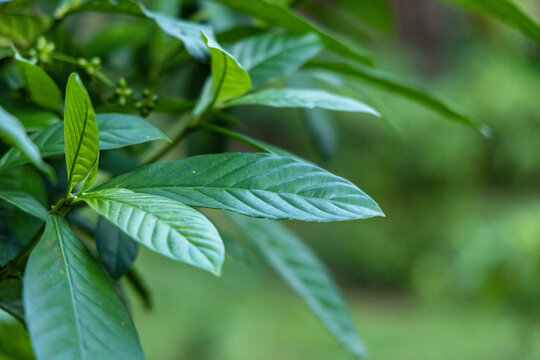
jjjjj
Chacruna is a member of the coffee family (Rubiaceae). It can be found throughout the Amazon rainforest and is also cultivated by local farmers for its use in ayahuasca.
Any DMT-containing plant can be used in combination with the ayahuasca vine to make the ayahuasca brew — by chacruna is by far the most common species used.
The leaves of chacruna contain anywhere from 0.1% to 0.6% N,N,DMT by dried weight.
A closely related species found primarily in Ecuador is Psychotria carthaginensis — which is also used as a source of DMT when making ayahuasca.
8. Epeña (Virola spp.)
Virola is a genus of trees related to nutmeg (Myristica fragrans). The leaves, bark, roots, and flowers of this tree contain varying amounts of N,N,DMT, and 5-MeO-DMT.
The powdered resin of virola species is insufflated as an entheogen by various indigenous Amazonian tribes — such as the Yanomami. It’s used in a similar context to yopo and is sometimes used as an alternative for making ayahuasca.
Virola species that contain DMT:
- Virola calophylla
- Virola carinata
- Virola divergens
- Virola elongata
- Virola melinonii
- Virola multinervia
- Virola pavonis
- Virola peruviana
- Virola rufula
- Virola sebifera
- Virola theiodora
- Virola venosa
9. Bulbous Canary Grass (Phalaris aquatica)
Phalaris is a species of grass found on every continent except Antarctica. This genus is incredibly diverse — found in virtually any landscape. Phalaris aquatica prefers marshy wetlands and is an invasive species in many parts of the world.
Various species of phalaris contain tryptamine alkaloids such as N,N-DMT (0.1%), 5-MeO-DMT (0.2%), and bufotenin (0.005%).
Animals that graze on phalaris plants with especially high concentrations of alkaloids develop a condition called “phalaris staggers” — which causes the animal to experience tremors, loss of coordination, and potentially death.
This species is not considered a safe alternative to other DMT-containing plants for the purpose of making ayahuasca or extracting DMT.
Other phalaris species that contain DMT:
- Phalaris arundinacea (0.12%)
- Phalaris tuberosa (0.02% )
10. Common Reed (Phragmites australis)
This wetland species of reed grows up to 6 meters tall and can spread laterally nearly 5 meters per year. It’s tolerant to droughts, brackish water, and high temperatures. These characteristics allow the common reed to flourish in just about any wetland bogs it manages to sink its roots into.
While this plant can be invasive and notoriously hard to eliminate from wetlands or bogs, it has many uses. It’s commonly used as a roofing material, it’s a solid source of cellulose, it can be eaten as food, the hollow stems are used as eco-friendly drinking straws, and the plant can be used in phytoremediation for cleaning contaminated water basins.
All parts of this plant contain modest concentrations of N,N,DMT, 5-MeO-DMT, and bufotenin.
This reed is sometimes mistaken for other DMT-containing grasses and reeds, such as Arundo donax and Phalaris aquatica.
11. Delosperma spp.
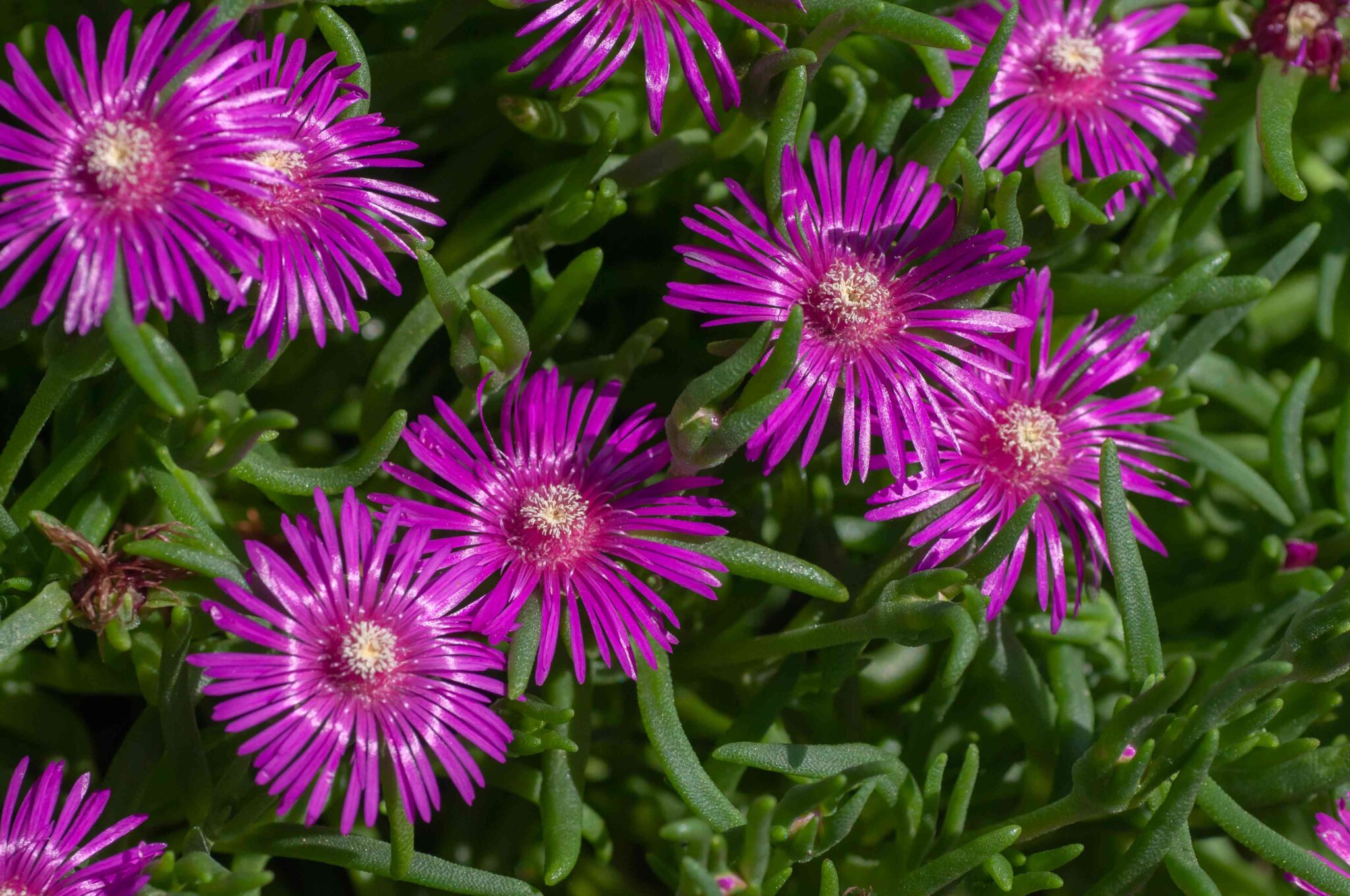
jjjjjj
Delosperma is a genus of drought-resistant succulents with brightly colored, long-lasting flowers. They’re found abundantly in South Africa and are a popular garden variety in other hot, arid parts of the world.
The leaves of delosperma contain both N,N,DMT and 5-MeO-DMT, which shift throughout the year. N,N,DMT content is higher in plants harvested in the winter, while 5-MeO-DMT concentrations are highest in the summer.
Species of delosperma that contain DMT:
- Delosperma acuminatum
- Delosperma cooperi
- Delosperma ecklonis
- Delosperma esterhuyseniae
- Delosperma hallii
- Delosperma harazianum
- Delosperma hirtum
- Delosperma lydenbergense
- Delosperma nubigenum
- Delosperma pageanum
- Delosperma pergamentaceum
- Delosperma tradescantioides
12. Desmodium spp.
Desmodium is a genus consisting of about 25 species in the Fabaceae (pea) family. This family is notorious for its DMT-rich species, including acacia and mimosa.
There are several species of desmodium that contain DMT, including D. caudatum. D. gangeticum, D. gyrans, and others. Several DMT-containing desmodium species have been moved to other taxonomic groupings, such as Phyllodium pulchellum, which contains N,N,DMT, 5-MeO-DMT, and bufotenin.
Some research suggests the species, Desmodium gangeticum has the highest concentration of DMT of the genus — with around 0.057% N,N,DMT by dried weight. The roots and leaves are used to extract DMT, but only plants that are two years old or older contain any detectable concentrations of DMT.
Species of desmodium that contain DMT:
- Desmodium caudatum
- Desmodium gangeticum
- Desmodium gyrans
- Desmodium pulchellum
- Desmodium racemosum
- Desmodium triflorum
Why Do Plants Contain DMT?
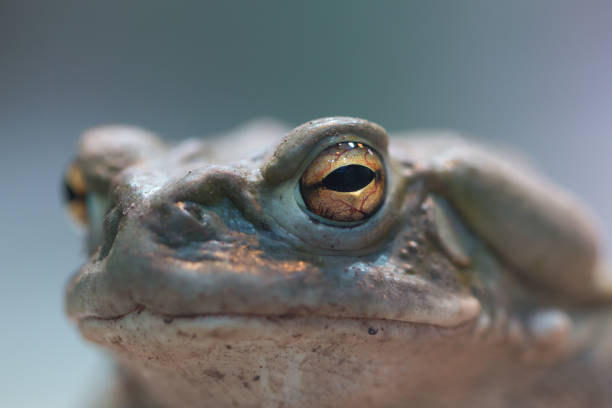
Among scientists is that plants produce DMT to protect themselves from insects and animals.
Several studies have shown that plants containing high concentrations of tryptamine alkaloids (including DMT) are preyed on less often than plants that don’t produce these compounds.
DMT, serotonin, and other tryptamines are toxic to many species of insects and interfere with feeding, reproduction, and immune function. These compounds can also negatively affect mammals that may seek to feed on these plants — especially in high concentrations.
A good example of this is the phalaris staggers that cause grazing animals to lose their ability to coordinate movement after eating large amounts of Phalaris grass.
There are species of sea sponges that produce a type of DMT called 5-Bromo-DMT (Spongebob DMT) as a way to repel barnacles and other mollusks from growing on the surface and clogging the creatures airway.
The Colorado River toad (Bufo alvarius) uses a similar method to avoid being eaten. It secretes a venom on its back that contains high concentrations of 5-MeO-DMT. In this case, the venom uses a few tricks to repel predators. It tastes horrible, it can make animals nauseous for several hours, and the DMT blasts them into DMT hyperspace for about 30 minutes while the toad hops away to safety.
Animals that have eaten DMT-containing plants or animals and survived are unlikely to make the same mistake again.






